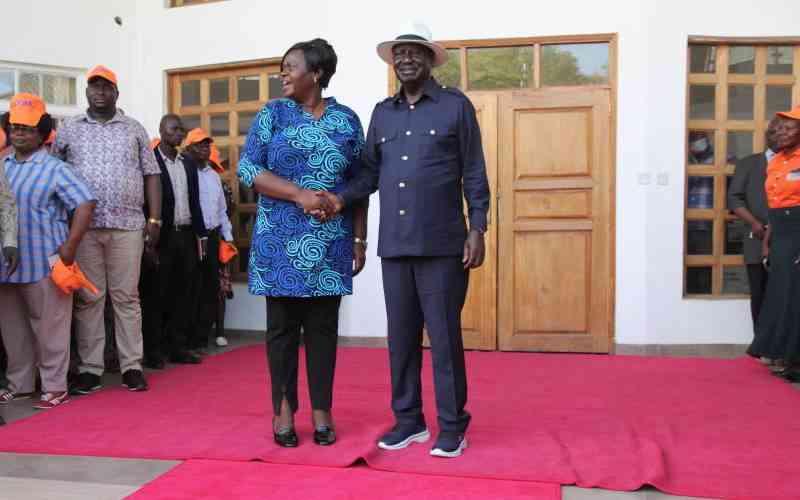ANALYSIS: What Club World Cup results say about African leagues
By the time the Round of 16 matches of the Club World Cup kick off on Saturday evening, all the African teams that traveled thousands of miles to the United States may have touched down back home—some to silence, others to criticism, and all, perhaps, to reflection.
It was a tough outing for Africa’s best clubs.
Mamelodi Sundowns from South Africa, Al Ahly from Egypt, Esperance from Tunisia, and Wydad Casablanca from Morocco all failed to make it past the group stage.
Sundowns gave the best fight, earning four points and scoring four goals.
Esperance picked three points with just one goal. Al Ahly got two points and scored four goals. Wydad were so poor, returning home without a single point, though they scored twice.
These numbers clearly show that it wasn’t a good tournament for Africa, especially when you see all four Brazilian clubs progressing, and even Al Hilal from the “less fancied” Saudi League also pulling through.
But beyond the results, the Club World Cup showed some deeper problems that African club football needs to fix if it ever wants to compete with the best in the world.
![Mamelodi Sundowns [PHOTO CREDIT: Mamelodi Sundowns on X]](https://i0.wp.com/media.premiumtimesng.com/wp-content/files/2025/06/GucK3JVWcAA6gsN-scaled.jpeg?resize=2560%2C2560&ssl=1)
One major problem identified was the last-minute change of coaches.
All four African clubs arrived at the tournament with virtually new managers.
That’s a huge risk. Teams need time to learn a coach’s style, ideas, and systems.
Changing the person in charge right before a big competition is like changing drivers while the car is already moving.
Miguel Cardoso is less than six months into his role at Sundowns, having been hired in December 2024.
Al Ahly’s José Riveiro officially took charge of the Egyptian club on 29 May, while Mohamed Amine Benhachem was confirmed as the substantive coach for Wydad Casablanca just five days earlier.
The instability in managerial roles in African clubs is best captured by Espérance Sportive de Tunis, who have just named Portuguese manager José Manuel Ferreira De Morais as their new head coach after their exit at the Club World Cup—marking the club’s third managerial change of the season. De Morais succeeds Khaled Ben Yahia, who was hired in March 2025.
Even if these coaches are worth their onions, they did not have enough time with the players to build understanding and trust. In key moments, that lack of chemistry hurt them.
These coaching changes made the teams look unsettled and confused.
As one analyst said, “It was like students writing their final exam while still trying to learn the subject.”
Another key problem was player fatigue.
While this may cut across the board, it appeared worse for African players, who often go from domestic league games to continental competitions and even national team duties — all with very little rest.
By the time they landed in the United States, many were already worn out.
Sundowns were a clear example of this. After their emotional and physical 4–3 loss to Borussia Dortmund, coach Cardoso still used the same tired starting eleven in the next match.
The result was obvious: the players looked slow and heavy. In contrast, Fluminense from Brazil made fresh changes to their team. They looked sharper, more focused, and full of energy.

Al Ahly had a similar issue. They were winning against FC Porto but couldn’t hold on in the final minutes. A few fresh players from the bench might have helped them keep the lead.
Then there’s the issue of game management. It’s not just about scoring goals — it’s about knowing how to protect a lead, slow the game down when needed, and finish strong. African teams often start well but lose control later on.
Al Ahly’s match against Porto showed this clearly. They took the lead, lost it, regained it, and then lost it again. Even when they scored what looked like a winning fourth goal, they couldn’t defend it.
This is a pointer that African teams need to improve their focus, especially in the final minutes of a match.
While speaking with the UK Guardian, Kgosana Masaseng, general secretary of FIFPro Africa, said beyond the technical setbacks, there are systemic drawbacks plaguing African clubs.
“From the games I have watched, football has taken a lot away from the players,” he said. “You are talking about teams that have just completed their domestic leagues, who were playing continental club championships. Players were also representing their national teams. So the schedule has been demanding.”
But his concerns go deeper.
READ ALSO: El-Kanemi Warriors set to appoint Kabiru Dogo as new Technical Adviser
Mr Masaseng said African leagues must take the lead in creating real change. “Largely, our leagues are very poor. That’s for starters,” he said. “Second, they don’t even have infrastructure.” He urged leagues to focus on governance, player welfare, and professionalism. Too many clubs still fail to pay salaries on time. Stadiums remain locked for no reason. Broadcast deals fall through because matches don’t kick off as scheduled. “If you are not professional enough to give a consistent product,” he warned, “that leads to a lack of media investment.”
The market value of African clubs highlights the gap. Al Ahly, the richest on the continent, is worth around €48 million. Real Madrid, by comparison, is valued at over €1.3 billion.
But even within Africa, the gap is massive. Ghana’s Bibiani Gold Stars are valued at just €1.85 million, and most Nigerian clubs are even lower.
Mr Masaseng believes that retaining talent is part of the solution. “The biggest disadvantage in our area is that we have a lot of players leaving the African continent for better leagues,” he said. “We need to retain our top talent so we can sell a better product.”
The Club World Cup may have ended early for Africa, but it offered a clear message: talent alone isn’t enough.
If Africa wants to compete, its clubs must build stronger structures, trust long-term processes, and professionalise every aspect of their operations.











